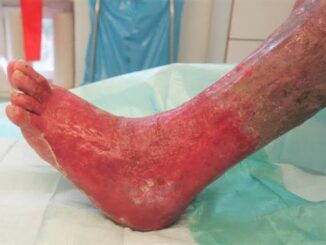
Numbing creams, also known as topical anesthetics, are commonly used to alleviate pain and discomfort from minor medical procedures, cosmetic treatments, and even some dermatological conditions. While these creams can be highly effective in providing temporary relief, it’s crucial to understand their potential side effects and risks. A recent incident underscores the importance of using these products with caution and under proper guidance.
Earlier today, an alarming incident was reported involving a patient who experienced severe side effects from using a numbing cream. The patient, preparing for a minor dermatological procedure, applied a thick layer of the cream at home before arriving at the clinic. Unfortunately, the cream was left on longer than recommended and over a larger area of the skin.
Upon arrival, the patient exhibited signs of severe systemic toxicity, including dizziness, confusion, and a rapid heart rate. Emergency medical intervention was required to address the adverse effects. The incident underscores the dangers of misusing numbing creams and highlights the importance of adhering to proper usage instructions.
#### **What Are Numbing Creams?**
Numbing creams contain active ingredients such as lidocaine, benzocaine, or prilocaine. These compounds work by blocking nerve signals in the applied area, temporarily reducing sensation. They are often used before procedures like injections, minor skin surgeries, or cosmetic treatments to minimize pain and discomfort.
#### **Common Side Effects**
While generally safe when used correctly, numbing creams can have side effects, including:
1. **Skin Reactions**: Some people may experience redness, itching, or swelling at the application site. These reactions are usually mild but can occasionally be more severe.
2. **Allergic Reactions**: Allergic responses to the ingredients can occur, leading to symptoms such as hives, rash, or even difficulty breathing in extreme cases.
3. **Systemic Toxicity**: Excessive use or improper application can lead to systemic absorption of the anesthetic, potentially causing symptoms like dizziness, nausea, or convulsions. This risk is particularly high if the cream is applied over large areas or used more frequently than recommended.
4. **Application Site Issues**: Applying the cream on broken or irritated skin can lead to further complications, including infections or delayed wound healing.
5. **Interference with Diagnosis**: In some cases, numbing creams can mask symptoms, making it difficult for healthcare providers to accurately diagnose underlying conditions.
#### **Recent Incident Highlights Risks**
Earlier today, an alarming incident was reported involving a patient who experienced severe side effects from using a numbing cream. The patient, preparing for a minor dermatological procedure, applied a thick layer of the cream at home before arriving at the clinic. Unfortunately, the cream was left on longer than recommended and over a larger area of the skin.
Upon arrival, the patient exhibited signs of severe systemic toxicity, including dizziness, confusion, and a rapid heart rate. Emergency medical intervention was required to address the adverse effects. The incident underscores the dangers of misusing numbing creams and highlights the importance of adhering to proper usage instructi
**Best Practices for Safe Use**
To minimize the risk of side effects, follow these guidelines:
1. **Consult a Professional**: Always consult with a healthcare provider before using numbing cream, especially if you have a history of allergies or skin conditions.
2. **Follow Instructions**: Adhere strictly to the usage instructions provided with the product or given by your healthcare provider. Avoid applying the cream to broken or irritated skin.
3. **Monitor for Reactions**: Be vigilant for any adverse reactions after application, and seek medical advice if symptoms arise.
4. **Avoid Overuse**: Use only the recommended amount and avoid applying the cream over large areas to reduce the risk of systemic absorption.
5. **Educate Yourself**: Understanding the potential side effects and risks associated with numbing creams can help you make informed decisions about their use.
**Conclusion**
Numbing creams can be a valuable tool for managing pain and discomfort during various procedures, but they are not without risks. The recent incident serves as a reminder of the importance of using these products responsibly and under appropriate medical guidance. By following recommended practices and staying informed, you can help ensure that the benefits of numbing creams outweigh the potential risks.



Be the first to comment